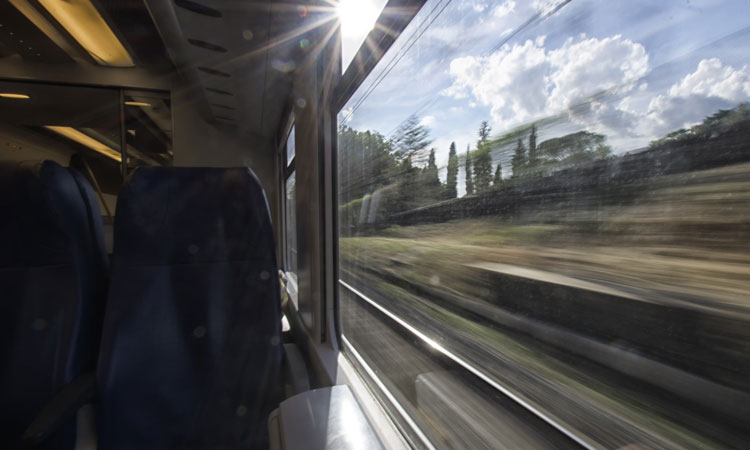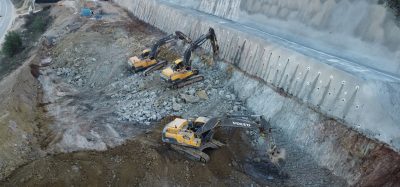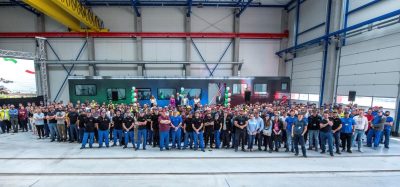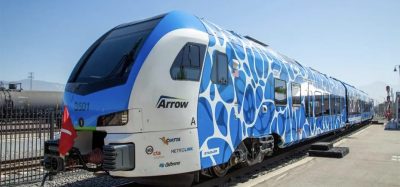A high-speed rail network in the EU is key to future sustainable mobility
Posted: 24 January 2023 | Global Railway Review | No comments yet
A study has revealed that investing in a comprehensive European high-speed rail network will massively reduce the environmental footprint of European passenger transport.


Results of a recently study have revelaed that investing in a comprehensive European high-speed rail network will to key to deliver added value to European society and massively reduce the environmental footprint of European passenger transport, creating a sustainable and equitable mobility. The study was contracted by Europe’s Rail Joint Undertaking (EU-RAIL) in collaboration with the Community of European Railway and Infrastructure Companies (CER), the European Rail Supply Industry (UNIFE) and the Alliance of Passenger Rail New Entrants in Europe (ALLRAIL) which analysed the impact of the European high-speed rail network connecting the Capitals of Europe and the main European cities and regions.
The study assessed the market potential and impact of investments in high-speed rail, investigated three network scenarios, looked at the societal perspective, including socio-economic and environmental benefits, building upon results from recent academic studies.
A ‘masterplan’ for a high-speed rail network connecting all EU capitals
The report proposes a ‘masterplan’ for a high-speed rail network connecting all EU capitals and major cities and calls on the European Commission (EC) and Member States for a coordinated implementation with adequate funding now and for the next decades to come. Such a comprehensive network which would mean at least tripling the existing high-speed rail network will require investment costs estimated at €550 billion, which will create net positive benefits to society in the range of €750 billion by 2070.
Nick Brooks, Secretary General at ALLRAIL, said: “Independent passenger rail companies enthusiastically support the fast growth of high-speed rail in Europe. We want to see it displace the private individual motor car as a product for the masses, for everyone from the budget conscious to very affluent travellers. High-speed rail must form the backbone of speedy door-to-door travel across the EU.
“The study shows that achieving this goal requires the extension and the upgrading of the current network, especially across borders. However, infrastructure alone is not enough. High-speed trains must be made attractive: high capacities (1,000 seats each), frequent departures and attractive prices.
“Making high-speed trains attractive will require a level-playing field both intramodally (between rail operators) and intermodally (e.g. fair taxation versus less sustainable transport modes) as well as full integration with feeder public transport services. We are nevertheless certain that the findings of this study will help guide national and European stakeholders towards reaching these goals.”
Needed to respond to the ongoing crisis on energy and sustainable mobility
Alberto Mazzola, Executive Director at CER, said: “The positive cost-benefit ratio of the study shows why Europe needs a high-speed rail masterplan as a response to the ongoing crisis on energy and sustainable mobility. Railway investments require a long-term commitment and sufficient funding, the TEN-T Regulation, currently under revision, must recognise this. The creation of an interoperable European high-speed network, linking European capitals and major cities, connecting urban nodes and airports, will reduce rail travel time between EU capitals and major cities to under four and six hours, and with affordable and comfortable trains rail will certainly become the preferred mode of transport. This is why it is essential to invest in high-speed rail.”
Philippe Citroën, Director General at UNIFE, said: “By demonstrating the major economic and environmental benefits of a European high-speed rail network, the study will underpin the Sustainable and Smart Mobility Strategy and of its ambitious objective to double traffic on high-speed rail by 2030 and to triple it by 2050, in full coherence with the Trans-European Transport Network (TEN-T). The European Rail Supply Industry, by providing cutting-edge technologies for rolling stock and ERTMS, and continuously investing in R&I, looks forward to making this vision a reality.”
Carlo M Borghini, Executive Director at EU-RAIL, said: “The study confirms the expected results of the investment in a high-speed rail network to connect the capitals of Europe and major cities. A high-speed rail network complemented with an efficient and cost-effective regional network will connect communities, daily commuters including cross-border travellers. A high-speed rail network is not wishful-thinking but, together with all the ongoing investments, including in EU-Rail R&I, the answer of rail to reaching COP’s targets for passenger mobility as translated in the EC’s Smart and Sustainable Mobility Strategy. While other modes will spend the next two decades to decarbonise, rail will continue building and fostering the future growth and integration of Europe!”
The executive summary of the report is available here and was performed by Ernst and Young in cooperation with Università Bocconi, benefiting also from data made available by ALLRAIL, CER and UNIFE.
Related content you will enjoy:
MoU signed to develop high-speed rail in North-East Europe
DB’s new ICE 3neo makes inaugural trip between Frankfurt/Main and Cologne
Contracts awarded for designing Poland’s first high-speed rail line
Stay Connected with Global Railway Review — Subscribe for Free!
Get exclusive access to the latest rail industry insights from Global Railway Review — all tailored to your interests.
✅ Expert-Led Webinars – Gain insights from global industry leaders
✅ Weekly News & Reports – Rail project updates, thought leadership, and exclusive interviews
✅ Partner Innovations – Discover cutting-edge rail technologies
✅ Print/Digital Magazine – Enjoy two in-depth issues per year, packed with expert content
Choose the updates that matter most to you. Sign up now to stay informed, inspired, and connected — all for free!
Thank you for being part of our community. Let’s keep shaping the future of rail together!
Related topics
Related organisations
ALLRAIL, Community of European Railway and Infrastructure Companies (CER), European Commission (EC), Europe’s Rail Joint Undertaking (EU-Rail), UNIFE (the European Rail Supply Industry)
Related regions
Related people
Alberto Mazzola, Carlo Borghini, Nick Brooks, Philippe Citroën







